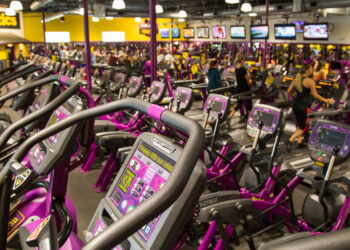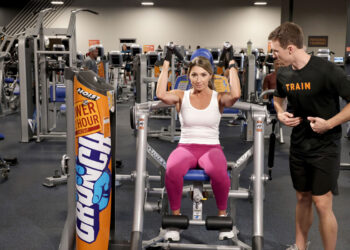When you look around your facility you’ll find that most people spend their workout time performing continuous cardio training exercises. These are exercises where the intensity level is basically constant throughout; day after day with little or no change in intensity by the exerciser. An example of this is using a treadmill or elliptical at an average pace, with no incline for 30 minutes or more. Although continuous cardio exercise is beneficial, the flip side is members hit a plateau in their training where they can become bored or unmotivated. It’s the classic syndrome of just going through the motion without feeling or seeing the “pay off” for the investment of workout time.
A great way to break through this training plateau is Interval Training. Research has shown Interval Training to be significantly effective. What is Interval Training? A simple definition is: short, high-intensity exercise periods alternated with periods of rest and recovery. These higher and lower intensity periods are repeated several times to form a complete workout.
Benefits of Interval Training:
• Break training plateaus
• Burn more calories, adding training variety
• Increase your speed
• Increase stamina and endurance
• Improve your anaerobic power, recovery time.
Interval Training can be performed on essentially all types of cardio equipment. However some equipment is far less effective than others due to functionality and versatility limitations. Total body vertical trainers are probably the most diverse and highly effective cardio equipment available which of course makes them ideal for Interval Training.
Top Five Reasons Total Body Vertical Trainers are Ideal for Interval Training:
1. Spontaneous increase in speed – there is no “down time” waiting for the machine to speed up
2. No top end limitations – sprint as fast as you can sprint or want to sprint
3. No joint stress – as with running on a treadmill, there is no pounding of knees and joints
4. Actively engages both lower and upper body – which is more realistic to sport and life training
5. A functional range of motion specific to the user.
How to Interval Train on a Veritical Trainer Total Body vertical trainers were designed to place the user in a natural upright position utilizing the body’s natural posture and a 75-degree position which unloads the lower back, helping distribute weight on the knees, joints and throughout the torso.
First, you can choose a type of sport or physical activity that interests you most. For example, I surf quite a bit so I match the cardio and energy system requirements for this sport. The precise training breakdown for surfing, along with many other sports, is available at versaclimber.com for free.
Second, determine your lower-intensity level. This is usually somewhere between 50 to 65 percent of your target heart rate. This will be your baseline, lowerintensity level. Then simply increase your intensity level up to where you feel like you are working hard to very hard, but avoid reaching a level over 85 percent of your target heart rate. If monitoring your heart is not feasible, instead use the RPE (Rating of Perceived Exertion) scale where 1 is basically at rest and 10 is working extremely hard.
Since total body vertical trainers offer a versatile step range of motion of one to 20 inches, be sure to start by using no resistance and take short four- to sixinch steps – similar to jogging in place. Warm up for five minutes with continuous exercise to your baseline lower-level intensity. After warm up, start five- to 15-second total-body sprints of six- to 20-inch steps. The step height and time of your sprints should be determined by how high your heart rate, or RPE gets. They should not exceed 85 percent of your target heart rate, or 7 of your RPE. The sprint is followed by an active rest and recover period of short steps of four to six inches. Once your heart rate has reached your determined lower-level intensity recovery mark, then begin the next sprint. Resistance can be added as your fitness level increases.
Interval Training on vertical trainers gives you the ability to target many specific individual energy systems with total body movements of outdoor activities or sports by using the body’s energy system that closely represents those activities. Thus, Interval Training allows you the ability to customize a workout based on the sport you play, or any physical activity that requires work with rest and recovery times.
The best way to gauge increases in interval performance is by using your heart rate. After just a few sessions of Interval Training, your heart rate recovery will improve by dropping faster to your baseline lower-level or not peaking as high after higher intensity sprinting.
As you know, your members are not seasoned athletes and they most commonly join gyms in order to get back into shape. So, your members first need to get their bodies adjusted to continuous exercise, then when comfortable, they should explore increasing training effectiveness through Interval Training on total body vertical trainers.
Brett Collins is the Sales and Marketing Manager of VersaClimber. He can be contacted at 800.237.2271, or by email at bcollins@heartrateinc.com.








